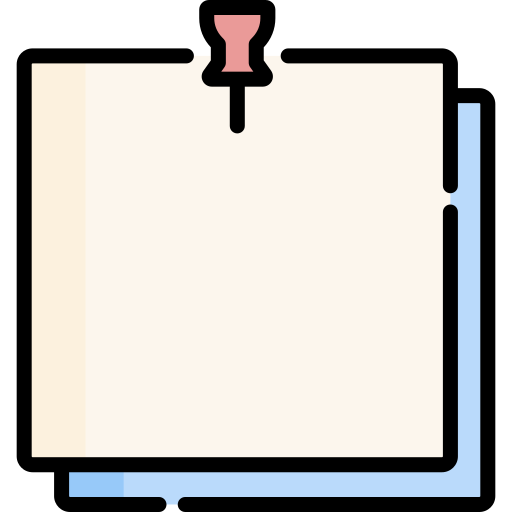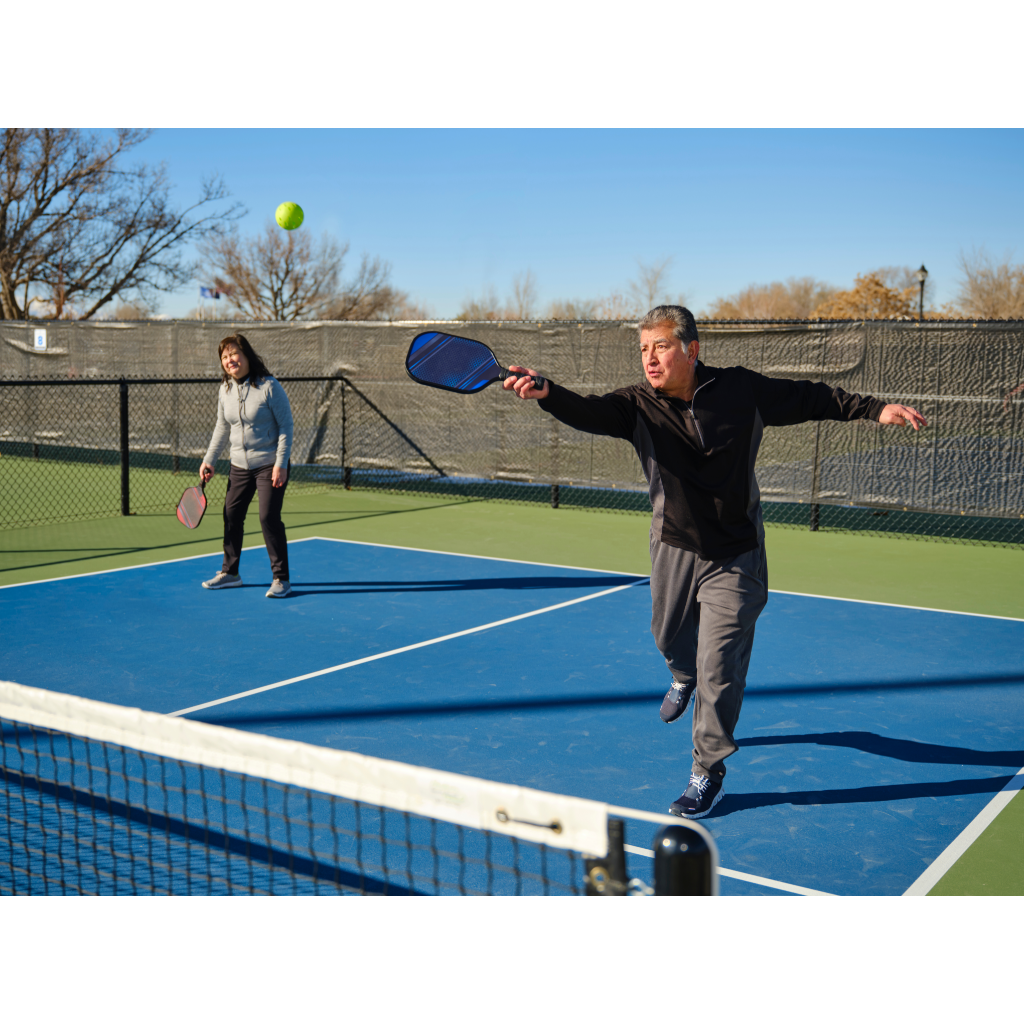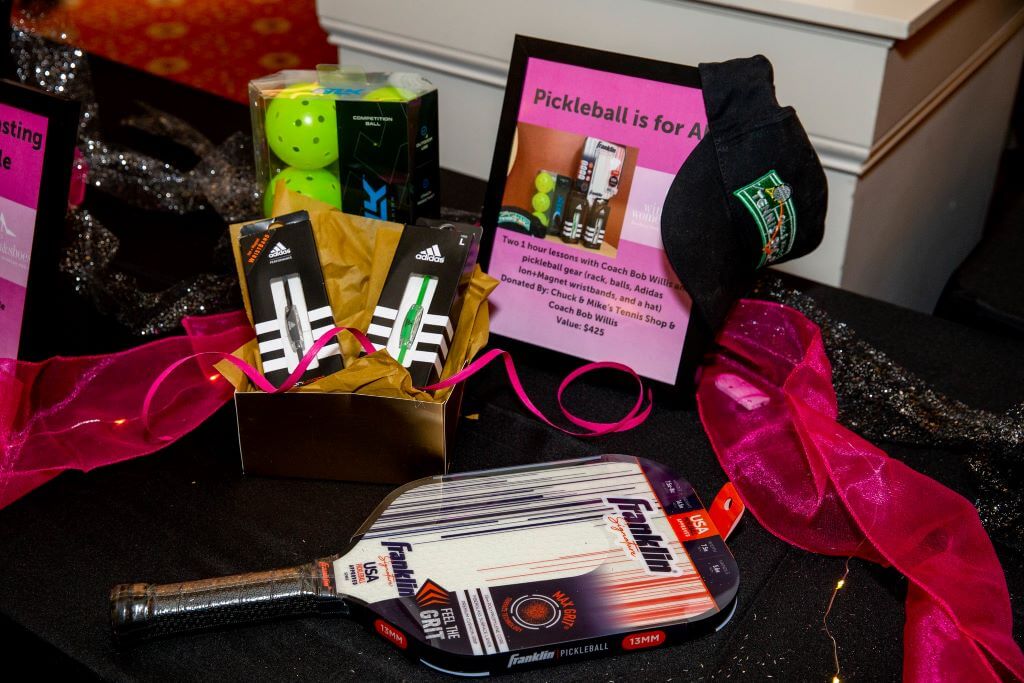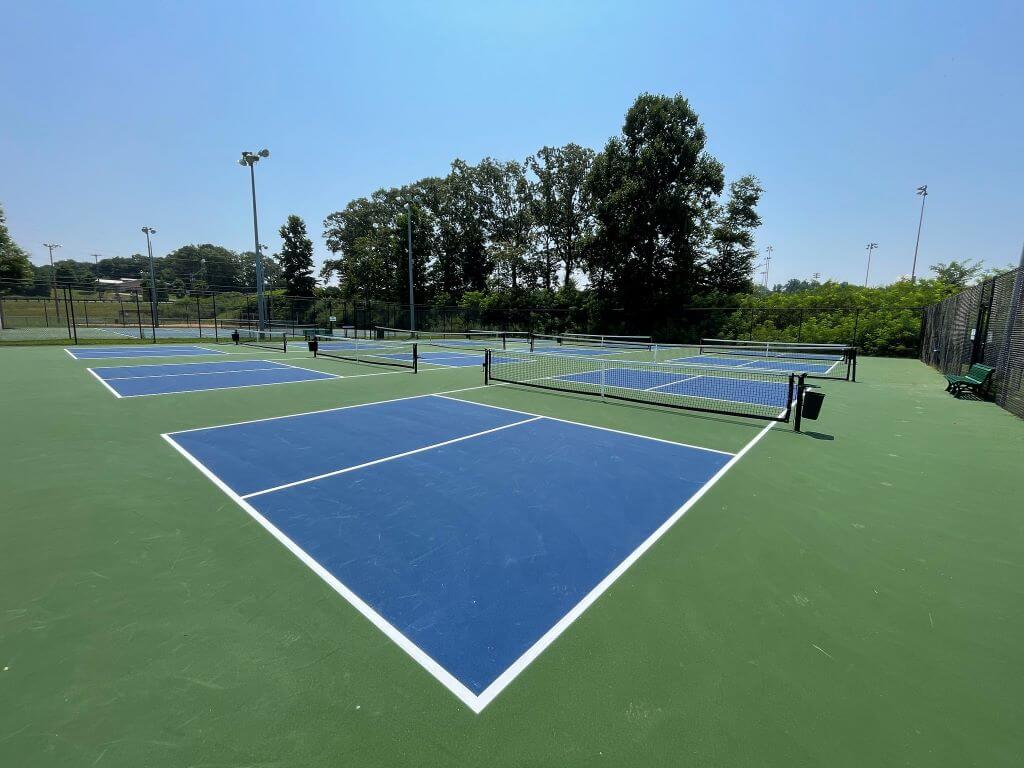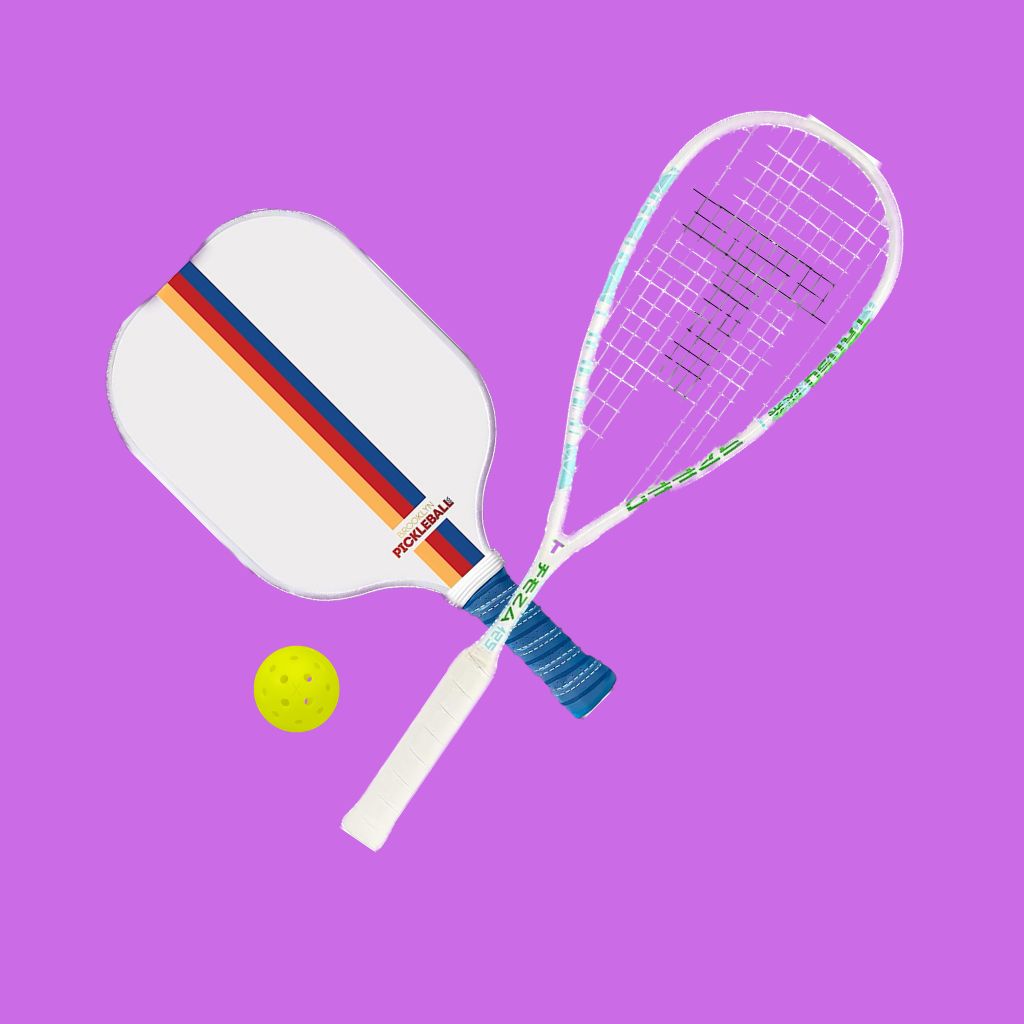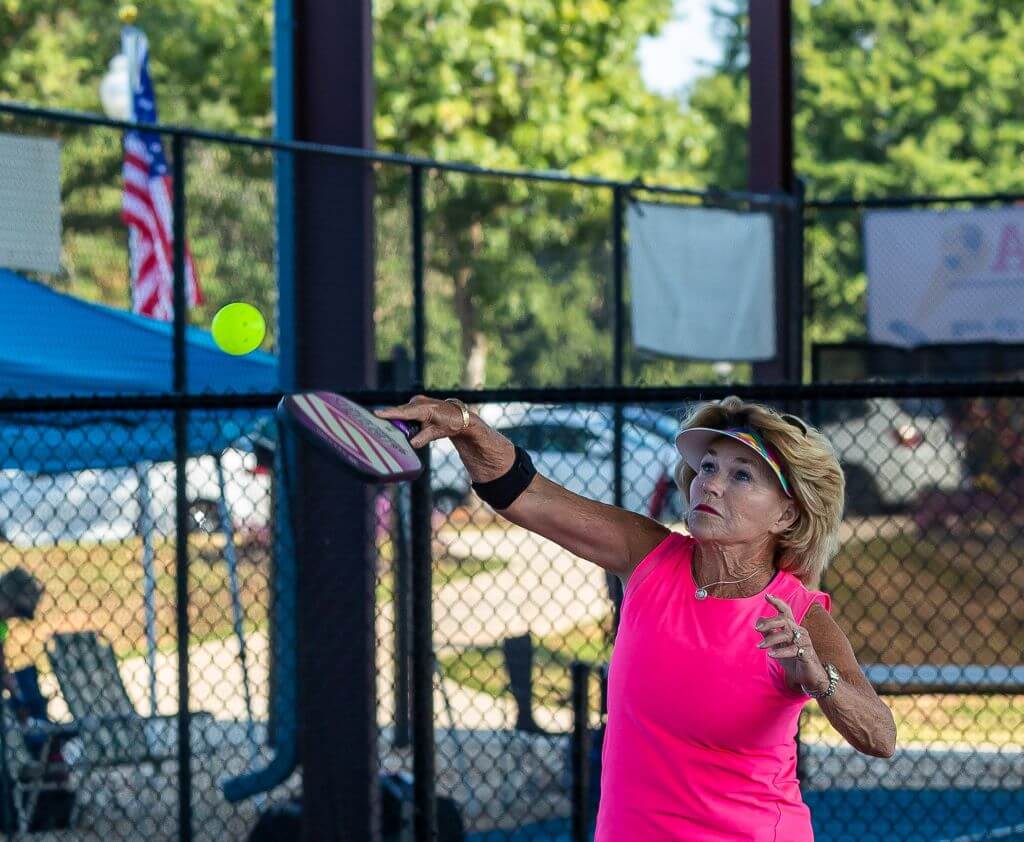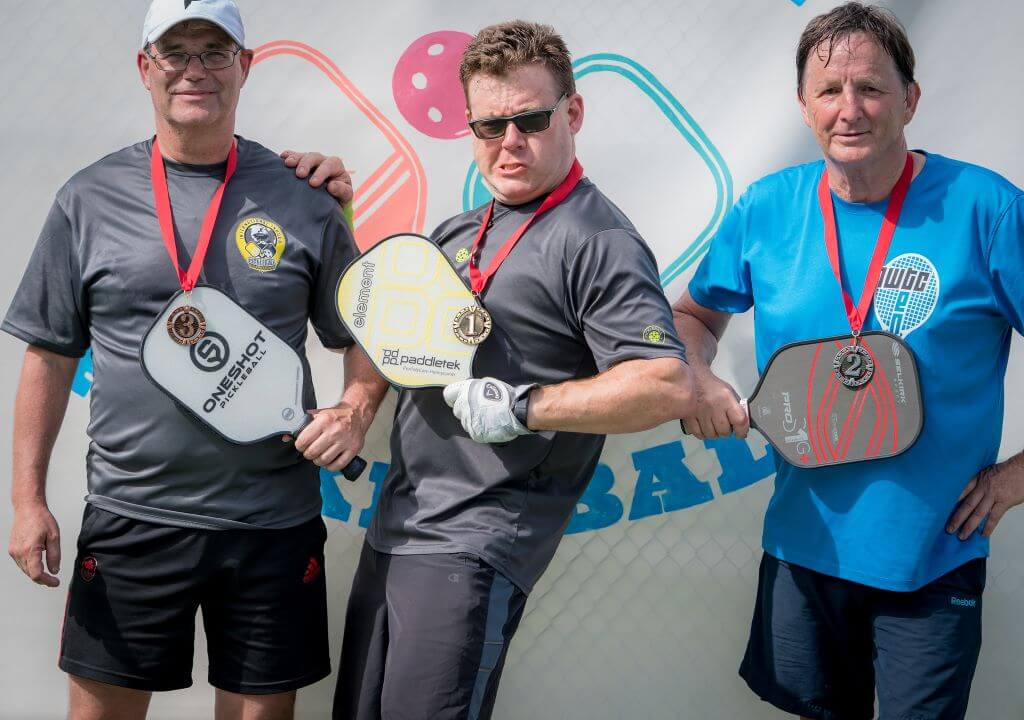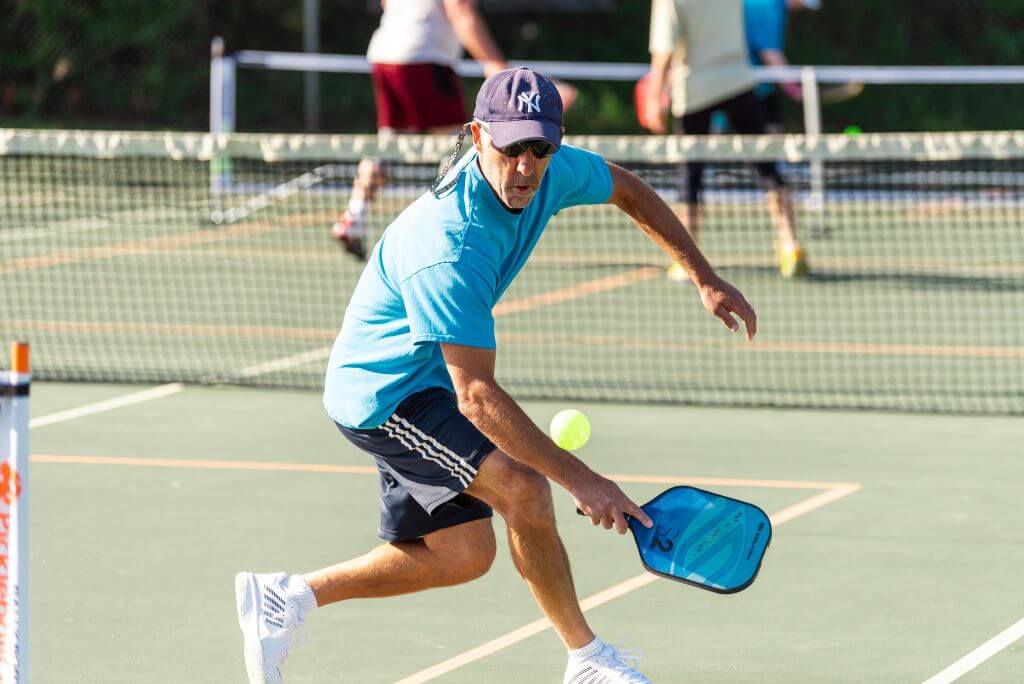How do you play pickleball? This is one of the first questions you’ll likely ask if you’re ever invited to a badminton court for a bit of fun in the sun.
The growing popularity of this great game is mainly because the rules are pretty straightforward. Pickleball in itself is very easy to play and enjoy, and can lead to benefits like better hand-eye coordination. The USA Pickleball Association has also been transforming many local community centers into pickleball courts.
In this guide, we’re going to teach you everything you need to know about the game, including the basic pickleball rules so you can have fun despite being a complete beginner.
What Is Pickleball?
Pickleball is a fun social game that was created in 1965 on Bainbridge Island outside of Seattle. Since then, it has grown to become one of the fastest-growing sports in America with almost 9 million playing it in 2022.
As a sport, it is basically a combination of ping-pong, badminton, and tennis. It is hit with the same underhand motion you’d use with ping pong, but is enjoyed on a court designed for badminton, which is one-third of the size of a normal tennis court.
Requirements for Playing Pickleball
You don’t need a lot of equipment to enjoy a game of pickleball. Here’s a quick look at the basic requirements for this popular game.
Pickleball Court
Pickleball can be played on any local court designed for similar racquet and paddle sports like badminton, table tennis, or any other courts present in community centers. It usually measures 20 x 44 feet, and at the center is a net that stands at a height of 34 inches. A 7-foot no-volley zone (aka the kitchen zone) is located on each side of the net.
Courts can be placed indoors or outdoors, but the equipment used will vary. For example, indoor balls are different from outdoor balls, and indoor courts will need more lighting fixtures while outdoor courts will need to have a windscreen installed all around.
Pickleball Paddles
Pickleball paddles are very similar to ping pong paddles, except they are squarish rather than rounded. They can be made from high-tech composite, wood, and other materials, and come in a huge variety of colors to choose from. The right pickleball paddle is one that gives you the most comfort during games.
They’re usually extremely lightweight to prevent elbow strain, with beginner pickleball paddles being lighter compared to the heavy-duty paddles used by professionals.
Pickleball
The wiffle balls used in pickleball are made from plastic, and are usually 0.78 to 0.935 ounces in weight, with a diameter of 2.87 to 2.97 inches. The materials and construction of the pickleball may vary, and some are more equipped for beginners than others, but you can choose a plastic ball of any color or design for your pickleball games.
Number of Players for Pickleball
Like with tennis and ping pong, pickleball can be enjoyed as teams of singles (two players) or doubles (four players).
Pickleball Attire and Pickleball Shoes
Athletes are usually required to wear branded sports garments that support their teams or country. But for general play, you can wear any comfortable loose clothing that suits the climate. Women often enjoy wearing tennis-style clothing like tennis skorts or skirts to stay cool and comfortable while playing.
For your footwear, you can go with any comfortable, lightweight, and breathable court shoes like tennis shoes. The exact type will depend on whether the court you usually play on has hardwood flooring or not.
Also, avoid using normal running shoes, and find a pair that has high lateral stability. This means a larger base and a sturdy lower structure to minimize typical pickleball injuries. Another thing to avoid is spike shoes since these can damage the surface coating of pickleball courts.
Pickleball Age Category
Unlike a lot of other sports, age has no bearing on skill ratings in pickleball. Anyone can play and enjoy the game—beginners, casual players, tournament participants, and enthusiasts of all athletic abilities and age brackets, even seniors! In fact, the average age of core players in pickleball was 47.9 in 2020.
For athletic and championship purposes, athletes are usually categorized into age groups. There’s the junior group for anyone below 18 years of age, the adults who are 19 and older, and the seniors who are over 50.
How Do You Play Pickleball?
When you play pickleball, the same simple rules apply to singles and doubles. The main objective of the game is to keep the ball from bouncing outside the court.
The game starts with the server hitting the lightweight ball, and projecting it toward the opponent’s side. The opponent must then hit the ball and return it back to the server’s side. The server then needs to defend and project the ball back toward the opponent’s side. The rally goes on until a player is unable to return the ball.
Basic Rules for Playing Pickleball
Knowing the basic rules of pickleball is essential for players of all levels and skills.
Pickleball can be played as doubles (four players) or singles (two players). Both singles and doubles pickleball games have the same playing area size and rules. Here’s a short list for you to remember:
- The serve must always be an underhand swing.
- Then you strike the ball, your arm must move in an upward arc.
- The pickleball paddle should not come in contact with the ball above the waist.
- The paddle’s head must not be higher than the highest point of the wrist during contact.
- A ‘drop serve’ is permitted, in which case none of the preceding elements apply.
- You should make the serve diagonally crosscourt, and it must land within the borders of the other diagonal court.
- Each server in a pickleball game can have only one serve attempt.
Non-volley Zone
The non-volley zone or “the kitchen” is the area of the court within 7 feet on both sides of the net. You cannot volley in these areas. This rule prohibits pickleball players from doing smashes while in the zone, since they basically guarantee a win every time.
It is considered a violation if:
- when volleying a ball, the player walks on the non-volley area
- when volleying a ball, the player steps on the kitchen line
A player may lawfully be in the non-volley area at any time except when volleying a ball. It doesn’t matter if the player’s momentum brought them there, or if it’s just a small item of clothing that touched the non-volley area. It will be called a fault, even if the volleyed ball is pronounced dead before this occurs.
Faults in Pickleball
A fault in pickleball is any action that halts play due to a rule infringement. These actions result in a fault:
- A serve that does not land within the borders of the receiving court will result in a fault.
- If the ball is struck into the net while serving or returning.
- Volleying the ball before a bounce on each side will result in a fault.
A fault by the receiving team will result in a point for the serving team. While a fault by the serving team will result in the server’s loss of serve or side out.
How Are Points Scored in Pickleball?
Only the serving side receives the points. The receiving side will not earn any points. The serving side receives a point in any of these instances:
- Every time the opponent fails to return the ball after it goes toward their side or faults.
- If the ball bounces out of court.
- If the returning ball bounces into the net.
How to Determine the Serving Sequence in Pickleball?
The serving rules of pickleball are quite tough compared to those of similar racket sports. But here’s what you need to remember:
- You always do the first serve of a pickleball game from the right side of the court.
- For doubles, the player on the right always serves first. The two players on the right will, however, switch between serving as the game progresses.
- The player on the right will do the first serve every time the service side changes.
- If the right player was the first to serve during the previous score, the players will switch sides so the left player can start the game first from the right side.
The serving side will also keep serving until the serving side faults. When the server faults, the serving side alternates with the opponent, and the opponent becomes the server.
If the game is refreshed after a break, the right side of the court remains the serving side only if the score is even or zero at the start of the game. If the score is an odd number (1, 3, 5, etc), the game begins from the left side of the court.
How to Serve in Pickleball
To serve the ball to your opponent, the pickleball paddle must make contact with the ball below the server’s waist. The server must also start the game at least one foot behind the baseline or non-volley zone line, and no foot should touch the baseline of the court until after the ball is served.
The server will only get one chance, unless the pickleball hits the net and lands on the other side of the service court. This is called a “let” and the server can serve again. It is also worth noting that, during a doubles game, each player gets to serve prior to the serve switch to the other team.
How to Determine the Winner in Pickleball?
Only the serving team can acquire points. The receiving team won’t score when the ball bounces out of court on the serving side.
The first side to score 11 points with a lead of at least 2 points wins the game. You have to have a 2-point lead before you can win the game. If both sides are tied at 10, the first to get to 12 wins, as long as the other player’s score remains at 10. The game can go on until one side finally scores two points more than the other.
For tournament play, you can play the game to 15 or 21 points. But winners still need to win with a 2-point advantage.
Tips to Improve Pickleball Game
Attend the serve. You have complete control over the toss, timing, and pace of this stroke. Keep these ideas in mind before serving:
- To ensure consistency and precision, toss the ball in the same area each time.
- Maintain your contact point below the waist.
- The deeper your serve, the longer it takes the returner to reach the kitchen line.
- Return for a reward. Your goal is to make it difficult for your opponent to drive or drop the third shot.
- For reliable, deep returns, take a short backswing and a long follow-through.
- Adjust your body to its proper position. Bend the elbow slightly and in front of the body.
- Set your body before hitting, and then go forward after contact.
The Third Shot
Make use of the third shot drop. This one is especially critical for hard hitters! In pickleball, third shot drops allow you to get up to the kitchen line, and put pressure on your opponent to make a decision. The kitchen line is where you should be gaining the majority of your points!
Aim for three feet above the net. Maintain a relaxed hold on the ball so that it does not bounce high when it lands on the other side of the net. Consider a shorter backswing and a longer follow-through. Steer the ball using your shoulder, using as little wrist movement as possible.
Drives are a terrific technique to change up the tempo and have an easier fifth shot to drop. Drive if the ball is too deep to drop or if you can step into your shot. Keep the drives low. Aim down the line or through the center.
Plan to Attack
- Keep your hold light and drive the ball with your body weight.
- The work you invest in getting to the kitchen line and hitting dinks is preparing you for an attacking shot.
- The best spot to attack is down the line. This offers your opponent less time to respond to the ball.
- There will be instances when you or your partner will pop a ball up and need to protect. Stay in the game and stay prepared to block.
- On hit, retreat and stand your ground. When you sense your opponent going to attack, take a couple steps back before they make contact to allow yourself time to defend.
- Block the ball in front of your body. Always be prepared!
- When the ball is near your body, use your backhand to block it.
Final Thoughts
Now that you know the answer to the question “how do you play pickleball”, you can get out there and have some fun with friends. Use this beginner’s guide to learn how to start playing pickleball, understand the game’s basic rules, find the right pickleball equipment, and ace your pickleball games.
If you want to learn how to play other great sports or need more information on the best sports gear to buy, have a look at some of the other guides we have on The Volley. With our guides, you can find the best products and tips for a myriad of sports.


